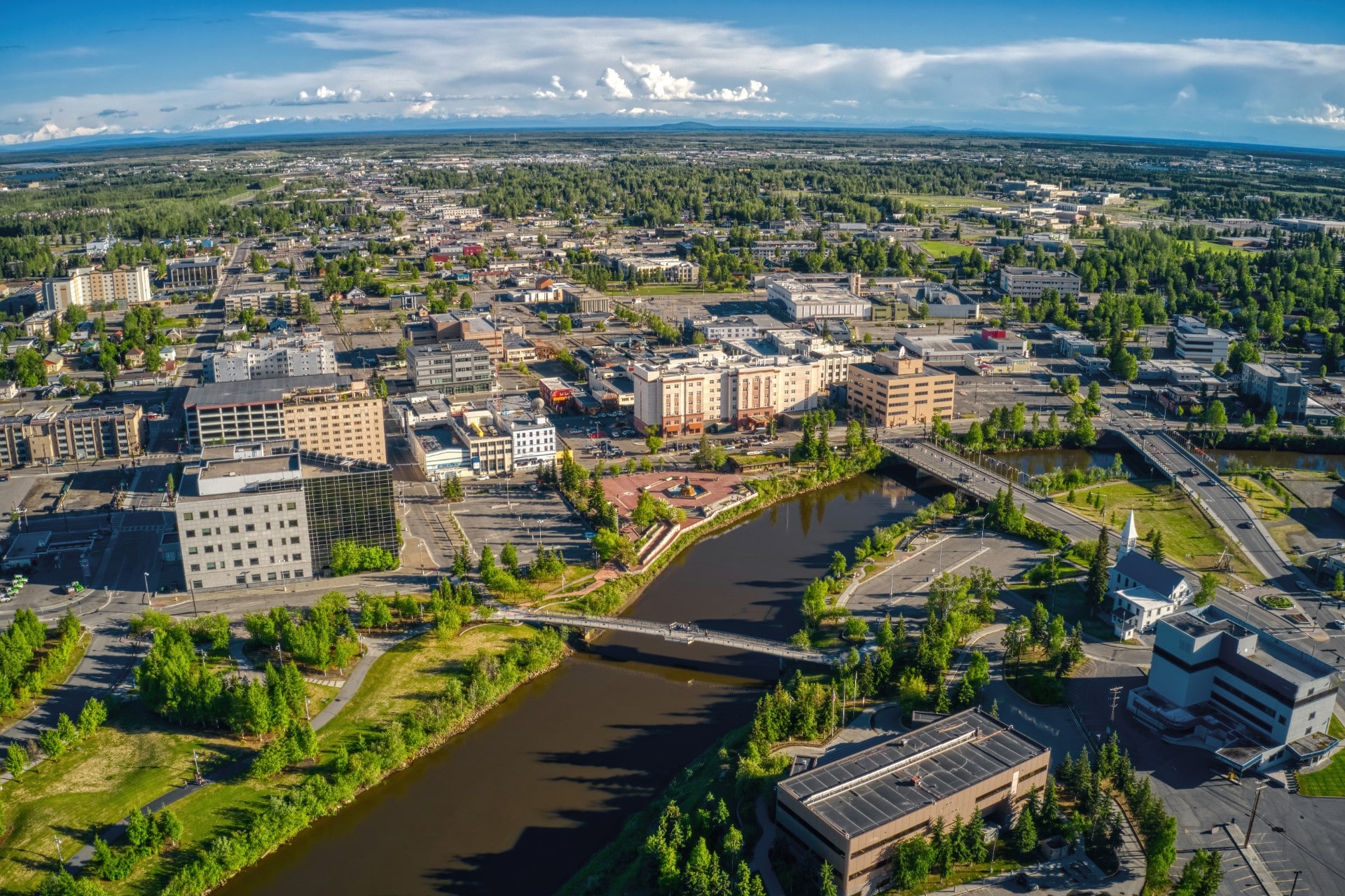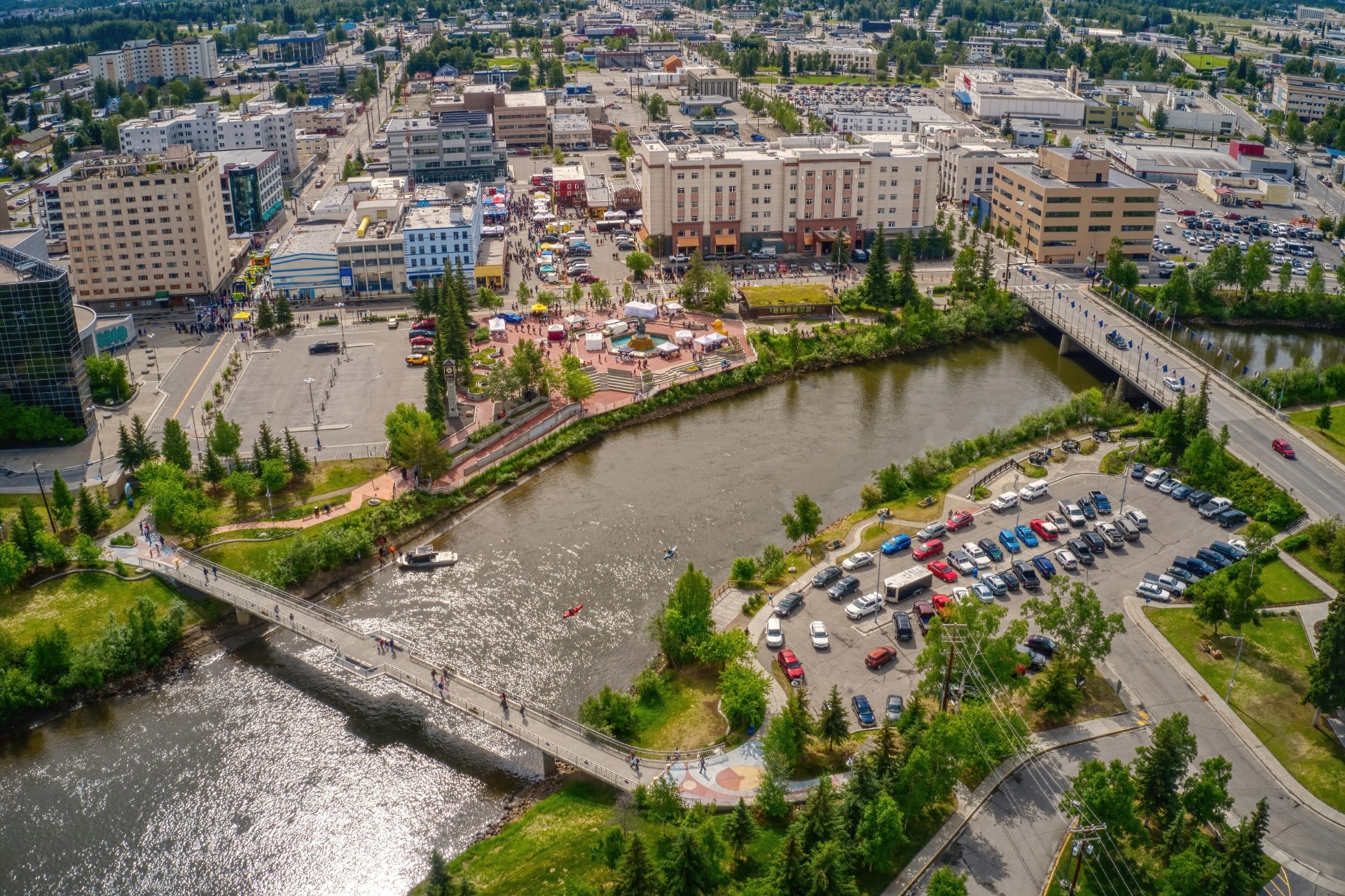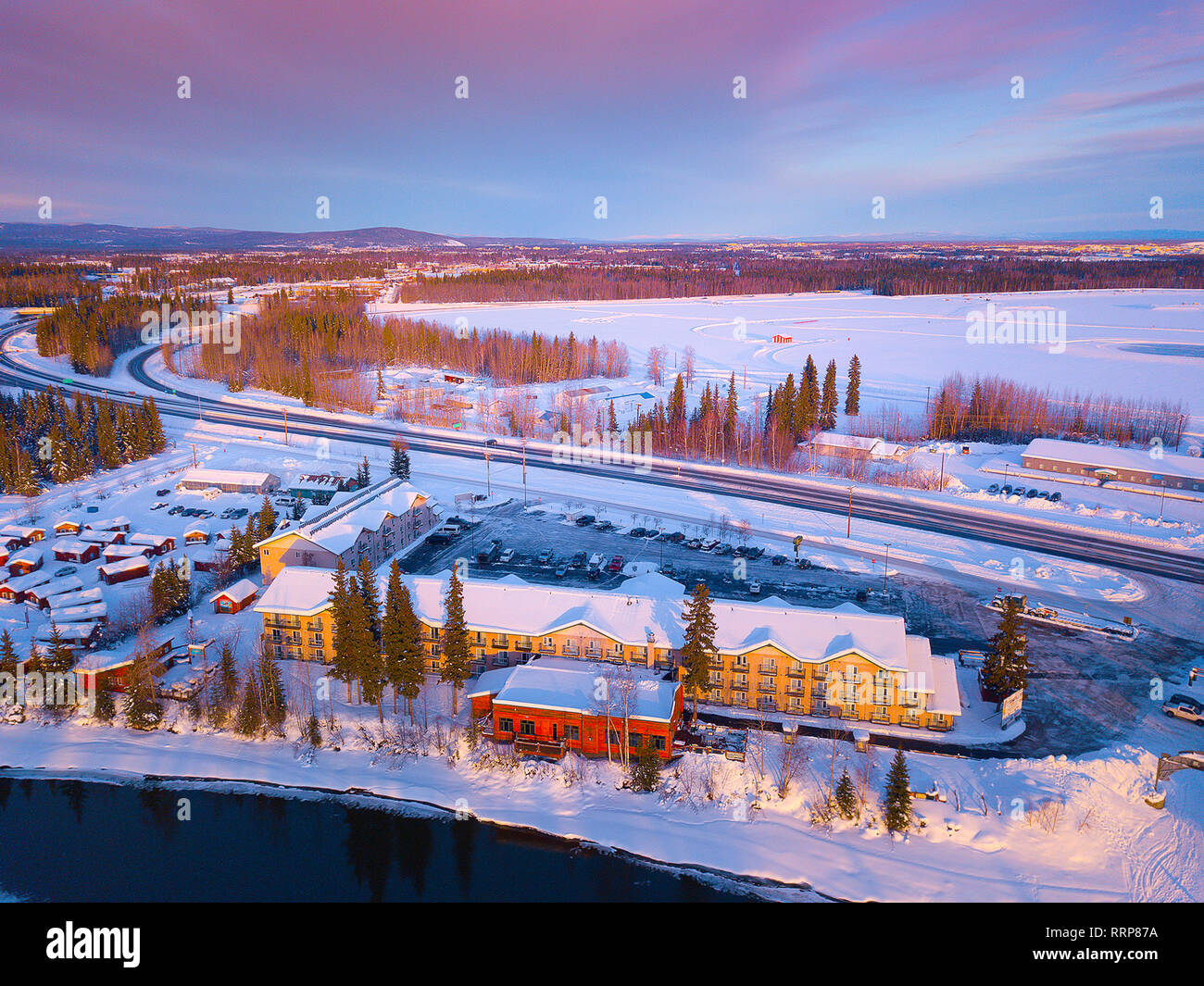What Is Fairbanks Disease? Separating Fact From Alaskan Lore
Have you ever heard the term "Fairbanks disease" and wondered what it really means? For many, the name might bring to mind a beautiful Alaskan city, but there's actually a very different, very real medical condition associated with that very same name. It's a common point of confusion, and we're here to clear things up, so you get the actual facts.
You see, the name "Fairbanks" itself often makes people think of Fairbanks, Alaska, a truly special place known for its amazing northern lights and a golden heart that beats with history and adventure. That city, a pretty unique spot in the Tanana Valley, is certainly a destination of a lifetime for many visitors, offering things like dog sledding and panning for gold. It's an area where the sky, at 65 degrees north latitude, puts on a spectacular show with aurora borealis and sunsets that seem to last forever, too it's almost magical.
However, when we talk about "Fairbanks disease," we are referring to a specific health condition, not anything connected to the Alaskan locale. This condition is a rare genetic disorder, one that affects how bones grow and develop. It's a topic that deserves clear explanation, and we want to make sure you understand what this medical term truly signifies, in a way that is easy to follow.
Table of Contents
- What is Fairbanks Disease?
- What Causes This Condition?
- Common Characteristics and Symptoms
- Understanding the Different Types
- Fairbanks, Alaska: A Different Kind of Fairbanks
- Frequently Asked Questions About Fairbanks Disease
What is Fairbanks Disease?
When someone mentions "Fairbanks disease," they are talking about a rare genetic health issue, a condition that impacts the way bones develop in the body. This disorder, which is actually pretty uncommon, affects the ends of growing bones, particularly the long bones found in our arms and legs. It's a condition that can reshape the body's framework from the inside, leading to a few physical changes, you know.
This condition, in some respects, prevents a natural process called ossification. Ossification is simply when the soft, flexible cartilage in our growth plates turns into hard bone. When this process doesn't happen as it should, it can cause various issues with how our bones grow and fit together. So, it's a fundamental problem with bone formation, really.
The Medical Name: Multiple Epiphyseal Dysplasia (MED)
The formal, scientific name for what many call "Fairbanks disease" is Multiple Epiphyseal Dysplasia, often shortened to MED. It's also sometimes referred to as dysplasia epiphysealis multiplex. This name gives us a better idea of what the condition involves: "multiple" means many, "epiphyseal" refers to the ends of the long bones, and "dysplasia" indicates abnormal growth or development. That, is that, a more precise way to talk about it.
This medical term helps doctors and researchers precisely identify the condition and its characteristics. It's a part of a larger group of skeletal dysplasias, which are conditions that affect bone and cartilage growth. So, MED is a specific type within that broader category, you see.
How It Affects Bones and Growth
Normally, our long bones get longer because cartilage in areas called growth plates, or epiphyseal plates, expands near their ends. This expansion then turns into bone. In people with Multiple Epiphyseal Dysplasia, this process doesn't work quite right. The cartilage in these growth plates has a problem with its oligomeric matrix, which is a fancy way of saying there's an issue with the basic building blocks that allow it to turn into bone correctly. It's like the construction materials aren't quite right, you know.
Because of this, the growth plates don't properly ossify, or turn into bone. This disorganized process means the ends of the bones, the epiphyses, don't form as they should. Over time, this can lead to joints not lining up correctly, causing discomfort and even premature wear and tear on the joint surfaces. It's a bit like a door that doesn't quite fit its frame, creating issues over time, apparently.
What Causes This Condition?
Fairbanks disease, or Multiple Epiphyseal Dysplasia, comes about because of changes in a person's genetic code. These changes are called genetic mutations, or sometimes pathogenic variants. These tiny alterations in our DNA are what kick off the problems with bone growth and development, you know, at a very fundamental level.
It's considered a rare disorder, with the dominant form affecting about 1 in 10,000 births. This means that even if a person inherits just one copy of the changed gene, they can develop the condition. That, is that, a pretty significant detail for families.
The Role of Genetic Mutations
The underlying cause of MED is these specific genetic mutations. These mutations mess with the normal production or function of proteins that are really important for healthy cartilage and bone development. When these proteins aren't working as they should, the whole process of how bones grow and mature gets thrown off. So, it's all about those tiny changes in our genetic blueprint, really.
Different mutations can lead to different forms of MED, which is why there's actually a group of skeletal dysplasias under this umbrella term. Each specific mutation might affect the condition in slightly different ways, leading to varied presentations in people. It's quite a complex picture, in a way.
Hereditary vs. Random Occurrence
Genetic mutations that cause Fairbanks disease can happen in a couple of ways. Sometimes, they are hereditary, which means parents pass them down to their children. If a parent has the dominant form of the condition, there's a chance their child will inherit it too. This is a pretty common way for genetic conditions to spread through families, you know.
Other times, these mutations can pop up randomly. This happens when cells are dividing, and a mistake occurs in the copying of the genetic material. In such cases, the person might be the first in their family to have the condition. So, it's not always something that runs in the family; it can just happen by chance, sometimes.
Common Characteristics and Symptoms
People living with Fairbanks disease, or MED, often show a range of characteristics and experience certain symptoms because of how their bones grow. These can vary from person to person, but there are some common threads. It's not always the same for everyone, you know, but there are typical patterns.
One of the more noticeable impacts is on a person's height. Many individuals with this condition tend to have a shorter stature than what is considered average. This is a direct result of the affected bone growth, particularly in the long bones of the arms and legs. It's a physical characteristic that is often apparent, you see.
Joint Discomfort and Movement
A very common complaint for people with MED is joint pain and stiffness. This discomfort often shows up in later childhood and can affect various joints, especially the hips, knees, or ankles. This happens because the joint surfaces might not be perfectly aligned, or the cartilage that cushions them wears down prematurely. It's a bit like having parts that don't quite fit together, causing friction and pain, you know.
The joint issues can lead to limitations in movement and sometimes developmental hip defects. This means that simple daily activities might become a bit more challenging. Managing this discomfort is a key part of living with the condition, and there are ways to help, of course.
Impact on Stature and Limb Length
As mentioned, shorter stature is a characteristic of MED. Beyond overall height, the length of individual limbs can also be noticeably affected. The arms, legs, fingers, and toes might be shorter than usual. This is directly related to the condition's impact on the epiphyses, the growing ends of these bones. So, it's a pretty direct consequence of the way the bones develop, you see.
While MED is sometimes called a mild form of dwarfism, it's important to remember that the specific physical characteristics can differ. It's about the disproportionate growth of certain bone parts, rather than just overall shortness. This is why understanding the specifics of the condition is really helpful, in a way.
Understanding the Different Types
It's interesting to note that Multiple Epiphyseal Dysplasia isn't just one single condition; it's actually a group of related disorders. This means there are different types of MED, and they can be told apart by how they are passed down through families, which is their pattern of inheritance. So, it's not a one-size-fits-all situation, you know.
Some forms might be dominant, meaning only one copy of a changed gene is needed for the condition to appear. Others might be recessive, requiring two copies of the changed gene. This distinction is quite important for genetic counseling and for families trying to understand their risks. It helps to clarify the family's situation, you see.
Learning more about the specific causes, the physical characteristics, and other detailed information about Multiple Epiphyseal Dysplasia is a really good idea for anyone affected or interested. Resources like credible medical information sites can offer a deeper look into this complex genetic condition. You can also learn more about genetic conditions on our site, and we have information on bone health and development as well.
Fairbanks, Alaska: A Different Kind of Fairbanks
Now that we've talked about the medical condition, let's switch gears and talk about the other "Fairbanks" – the city of Fairbanks, Alaska. This city has a rich history and is a major hub in Alaska's interior. It became the borough seat with the establishment of the Fairbanks North Star Borough back in 1964. It's quite a significant place, actually.
Tourism plays a pretty big part in Fairbanks' economy. People come from all over the world to experience its unique charms and natural wonders. It's a place that offers a lot, from cultural experiences to outdoor adventures. So, it's a completely different kind of "Fairbanks" entirely, you know.
The Golden Heart of Alaska
Fairbanks is often called the "Golden Heart of Alaska," and for good reason. It's centrally located, sitting north of Denali National Park and Preserve and south of the Arctic Circle. This position gives it a truly special climate and an amazing natural environment. The city straddles the Chena River near its meeting point with the Tanana River, which adds to its scenic appeal, too it's almost picturesque in its own way.
The city itself might not always be described as the most picturesque, but its diverse attractions and activities certainly make it stand out on the Alaska map. There's a lot to discover about the city's history, where to stay, and what to do when you're there. It's a place with a lot of character, you know.
Attractions and Experiences
Fairbanks is famed as a northern lights viewing destination, and honestly, seeing the aurora borealis dance across the sky is an experience you won't forget. But there are plenty of other reasons why Fairbanks, Alaska, is truly spectacular. From catching a glimpse of the northern lights on a guided tour to hiking with reindeer, the options are pretty varied, you see.
Some of the best things to do in Fairbanks and the surrounding area include:
- Panning for gold, which is a nod to its rich history.
- Enjoying dog sledding, a classic Alaskan adventure.
- Visiting the Arctic Circle, a truly memorable trip.
- Taking a riverboat tour, offering a peaceful way to see the scenery.
- Exploring local museums, to learn about the area's past and culture.
Frequently Asked Questions About Fairbanks Disease
Here are some common questions people often have about Fairbanks disease, also known as Multiple Epiphyseal Dysplasia (MED):
Is Fairbanks disease a type of dwarfism?
Yes, in a way, Fairbanks disease is sometimes considered a mild form of dwarfism. It's a condition that affects bone growth, which can lead to shorter stature compared to average. However, it specifically involves the ends of the long bones and can cause joint problems, which are key characteristics of this particular type of skeletal dysplasia, you know.
What causes Fairbanks disease?
Fairbanks disease is caused by genetic mutations, or changes, in a person's DNA. These mutations can be inherited from parents, meaning they are passed down through families. They can also occur randomly when cells are dividing, so a person might be the first in their family to have the condition. So, it's all about those genetic changes, really.
What are the main symptoms of Multiple Epiphyseal Dysplasia (MED)?
The main symptoms of Multiple Epiphyseal Dysplasia (MED) often include joint pain and stiffness, particularly in the hips, knees, or ankles, which might appear in later childhood. People with MED may also have shorter stature than average, and their arm, leg, finger, or toe lengths might be noticeably reduced. These symptoms stem from the disorganized way cartilage turns into bone at the ends of long bones, you see.

Downtown Fairbanks: What to See & Do | Celebrity Cruises

Downtown Fairbanks: What to See & Do | Celebrity Cruises

Fairbanks